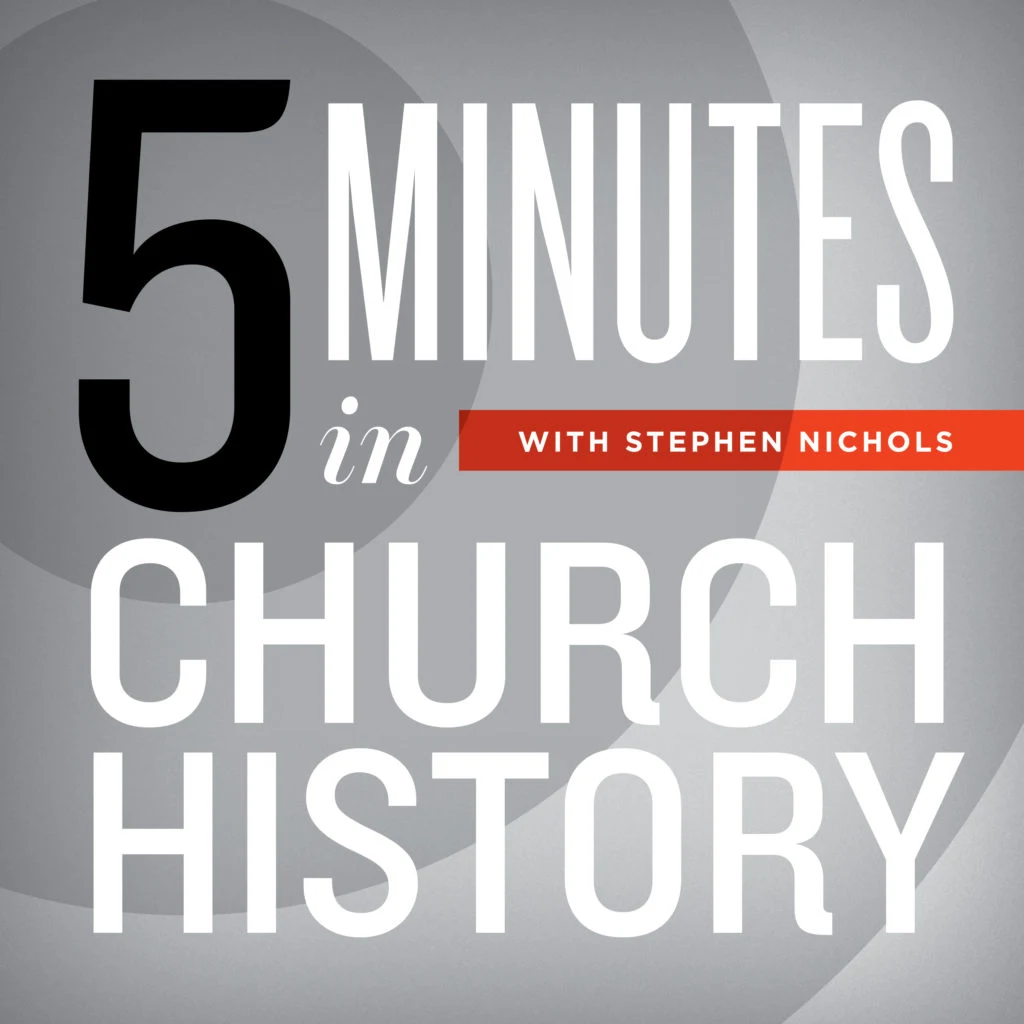The Meaning of the Apocalypse Tapestry

The Apocalypse Tapestry was created to teach a mostly illiterate audience about the book of Revelation. Today, Stephen Nichols highlights how biblical storytelling and medieval artistry are combined in this tapestry to instruct and inspire.
Welcome back to another episode of 5 Minutes in Church History. Last week we started a conversation about the making and the history of the Apocalypse Tapestry. This week let’s continue our conversation by discussing the content of it. This tapestry is like the stained glass windows in the Middle Ages, both served to visually instruct a mostly illiterate audience. Well before the weaving of the Apocalypse Tapestry that began in 1377, no one had undertaken a complete visual representation of the book of Revelation. And as we mentioned, this tapestry was originally 140 meters or 450 feet long, and each panel was 20 feet high. The overall tapestry was divided into six parts, and the panels alternate with a brilliant red or a striking blue background.
It opens with a panel called “The Reader”. John is depicted holding a scroll and he’s looking out on the viewer and one hand points to the scroll. He was reminding us of those opening words of Revelation Chapter one, that blessed is anyone who reads this prophecy and also blessed is anyone who sees it. The next panel depicts the seven churches. Then comes panels depicting the throne seen in heaven. A particularly moving panel depicts the Agnus Dei, the Lamb of God, pierced through by a spear. And then the seals are opened, and now it gets really interesting. Monsters start appearing. Dragons show up in these panels. The biblical text gets interpreted through the eyes of medieval lore and legend. I mentioned that the tapestry is in six sections. Each of these sections is introduced by a panel that is actually 40 feet tall. It’s the height of both of these panels and it’s slightly less wide, so more of a rectangle. And in each of these six special panels, John is holding the scroll, but he has different poses, and he’s illustrating the movement as we go through the book and all that’s happening.
John also shows up in many of the panels, most of them, sometimes he’s covering his eyes as the scene depicts horrific moments of judgment. Sometimes he has a wide-eyed expression of joy or hope as the scene is more triumphant in his imagery. Sometimes he’s looking at the angels as if he’s looking to them to help him interpret what he’s looking at. And these angels then, which appear throughout these panels, we’ll point at a particular thing in the panel or direct John’s vision to something that’s happening in the scene. And that then is important to interpreting what’s happening in the panel. It’s as if John and these angels are actually helping us as we view this tapestry and trying to make sense of this fascinating book.
Well, we also remember that this was the era of plagues in the Black Death and various images would’ve served as touchstones for a 14th century audience to have an experiential connection to the scenes in the action of the events of the book of Revelation.
The whole journey along these panels, which is to say the whole journey through the apocalypse of John culminates in the new Jerusalem scene. This panel has that striking blue background. John stands in profile on the far left. His mouth is closed. He's speechless. He's holding a small book at his side, and it's closed. This is likely the book of Revelation. It's coming to its conclusion now. It's finished. With his right hand. He points straight into the center of the panel and suspended in the air is the new Jerusalem, looking just like a well-fortified medieval city. The new Jerusalem is descending. Below it is a river, and on either side, a tree, and on the top of the panel, the heavens are opened. While John's hand points to the new Jerusalem, his face angles upward. He's fixated on heaven. The battle is over, the victory is secure. The old has passed and his revelation declares, “Behold, God has made all things new.” Well, that's the Apocalypse Tapestry, a medieval wonder. And I'm Steve Nichols and thanks for listening to 5 Minutes in Church History.
Recent Episodes
A Little Church History of a Middle Colony: Early Influences
December 10, 2025|American Church History
Gunpowder and a Proclamation
December 3, 2025|Geographical Perspectives
Thanksgiving in Church History
November 26, 2025|American Church History
3 Sermons on the Hallelujah Chorus
November 19, 2025|General Church History
Charles Jennens’ Libretto
November 12, 2025|General Church History
Cyprian of Carthage: Crisis in the 3rd Century
November 5, 2025|General Church History
